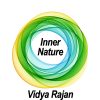Inner Nature: Organizing Life

By Vidya Rajan, Columnist, The Times
The range of lifestyles, forms and patterns that characterize life are staggering in their variety, which rivets the eye and captures the imagination. In this article, I will look briefly at ways that humans have tried to organize life and capture both the similarities and differences.
The first documented person to attempt to classify life was Aristotle, student...
Inner Nature: The mystery of viruses

By Vidya Rajan, Columnist, The Times
Viruses are one of the greatest mysteries of biology. In fact, they are so problematic that some biologists do not consider that viruses are biological, relegating them instead to chemistry. Regardless of which camp one adheres to, viruses are significant to living organisms through their parasitism. Because of their obligate parasitism – they require living...
Inner Nature: Transparent Animals

By Vidya Rajan, Columnist, The Times
Recently I came across this quiz clue: What links barreleye fish, ghost shrimp, glass frogs, golden tortoise beetles, jellyfish and sea angels?[1] Besides the obvious fact that they are all animals, there were a few options I considered: 1. They are aquatic (but the beetles are not); 2. They are invertebrates (but frogs are not) and 3. They are transparent (and...
Inner Nature: Photosynthetic and light-harvesting animals

By Vidya Rajan, Columnist, The Times
Photosynthesis – a term that pretty much everyone understands – uses sunlight, carbon dioxide, water, and the light-harvesting green molecule, chlorophyll, to make sugars and release oxygen. Photosynthesis is carried out by free-living cyanobacteria, as well as plants and algae which contain chloroplasts, which are really just internal cyanobacteria, inside...
Inner Nature: Good news in science

By Vidya Rajan, Columnist, The Times
This month, I highlight some of the great things that are happening in the world which science had a hand in delivering. Enjoy.
Klamath dam is down and salmon swim freely upstream for the first time in 100 years.[1]
The mighty Klamath river flows from the Cascade mountains along the Oregon-California and empties into the Pacific Ocean. In 1918, the first dams...
Inner Nature: Gene Snatcher

By Vidya Rajan, Columnist, The Times
In an earlier article[1] I wrote about tardigrades, a ubiquitous and indestructible animal with an extraordinary ability to endure adverse environmental conditions. This superpower is assisted by their entry into a dormant state called “tun”, in which they lose all their water and curl up into a husk. Tardigrades in the tun state can be subjected to boiling,...
Inner Nature: Did life originate at hydrothermal vents?

By Vidya Rajan, Columnist, The Times
The deep ocean floor is a desolate place: a desert with frigid waters, crushing pressures and inky darkness. But in the expansive and featureless wasteland are oases populated by bizarre life forms. These oases are located at hydrothermal vents, which were discovered in the mid-1970s but remained difficult to reach and to study for many decades. Recent technological...
Inner Nature: Merde!

By Vidya Rajan. Columnist, The Times
Merde. In other words, s**t, p**p, d**g, number 2, BMs, excreta, droppings, stools, feces. This is not a really pleasant subject of conversation, or even a polite one (unless you lived back in the eighteenth century when everyone was apparently fascinated by it as an indicator of health). But it’s an important part of life. If you’ve ever been constipated...
Inner Nature: Virgin Births

By Vidya Rajan, Columnist, The Times
December seems a good time of year to bring up the topic of virgin births. Religion aside, this is actually an interesting and significant biological topic. Curiously, virgin births have been documented in all vertebrates with jaws with the exception of mammals. To be clear, the majority of organisms on this planet – single celled bacteria and protists –...
Inner Nature: Sentience

By Vidya Rajan, Columnist, The Times
Two books released over the last two years: Lars Chittka’s “Mind of a Bee” and Stephen Buchmann’s “What a Bee Knows: Exploring the Thoughts, Memories and Personalities of Bees” have thrown into turmoil the question of sentience – the capacity for feelings – of honeybees, and whether we humans truly understand the capabilities of minds that operate...


